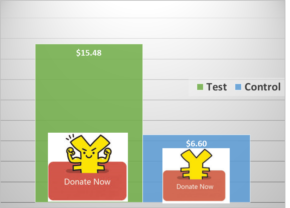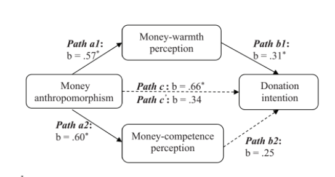If Money Were a Person
Stop me if you’ve heard this one. A dollar bill walks into a bar…
Anthropomorphism, that mouthful of a word with onomatopoeia (now we’re just doing a weird flex, Google it) like qualities is when we imbue objects or animals with human qualities. You know, like The Little Engine Who Could or Winnie the Pooh or that damn GEICO Gecko or a million other examples.
Suffice to say this linguistic technique is popular –and for good reason. Anthropomorphism puts a human schema on our consideration and evaluation of objects or animals. That object is then rendered worthy of moral care and consideration. That people almost naturally do this with animals explains, in part, why donating to help animals beats helping plants and why animals with vertebrae do better than invertebrates regardless of the ecological benefit.
But what about money? Do people think of money as having human qualities?
There is some anecdotal precedent. Francis Bacon said, “money is a great servant, but a bad master” and American poet Richard Armour said, “Money talks, I will not deny. I heard it once: it said Goodbye.”

More broadly, the five-dollar bill in Australia is sometimes referred to as a pink lady and the Chinese refer to money as Brother Kong Fang, and last but not least, a Google search for “money clip art” will return lots of money in human form.
Even if people don’t naturally assign money human traits can it be primed? And most important, might that impact giving and, most importantly, “why”?
We’ll say it until we’re blue in the face (in fact, we’re well into the purple tones by now), test results are irrelevant if you don’t know “why” test A beat test B. The “why” is what matters, not the winner/loser.
To that end, researchers ran a novel experiment reported in the Journal of Consumer Research. They leaned on existing social science research showing warmth and competence are two judgements rendered on objects given human associations.
When people think an object is human-like we make it warmer (feeling and sensing) and competent (ability to do things). Their hypothesis was twofold:
- Money will exhibit this same pattern – make it more human and people will see it as being able to feel and do.
- The feeling part imbued to money is what will increase charitable giving because past work has shown ‘warmth’ dimensions to be far more important in other domains.
The experiment among Chinese consumers showed the exact same appeal with the only difference being the Yuan currency symbol shown with human traits in the test. Consumers indicated a greater willingness to give to the test and higher amounts.

Survey questions were used at the end of the experiment to measure the level of warmth and competence assigned to the Chinese yuan.
The test condition participants did in fact rate the Yuan as warmer and more competent. However, the more sophisticated, causal mediation analysis shows that the money competence perceptions do not increase donation intent (path b2 being non-significant).

So what do we do with this?
Well, you could probably do worse than testing the clip art idea in this post if your alternative is a bunch of random, non-theory-based test ideas.
But, this is where knowing the ‘why’ matters. We make money warmer – i.e. more helpful, kind, caring – by imbuing it with human qualities and then it – the money – is doing something other-oriented and positive. This make us feel less (mental) pain in parting with it.
Here are a few top of the head copy or visualization ideas,
- Donate a Benjamin (take advantage of the fact that our currency has human faces on it)
- Let your money help others by supporting X
- If your dollar were a person, how would it help person X in need
- More currency visualization with helping, caring, kind words on it (in place of the currency symbol)
- Those faux ‘checks’ as reply device could be humanized
Kevin


